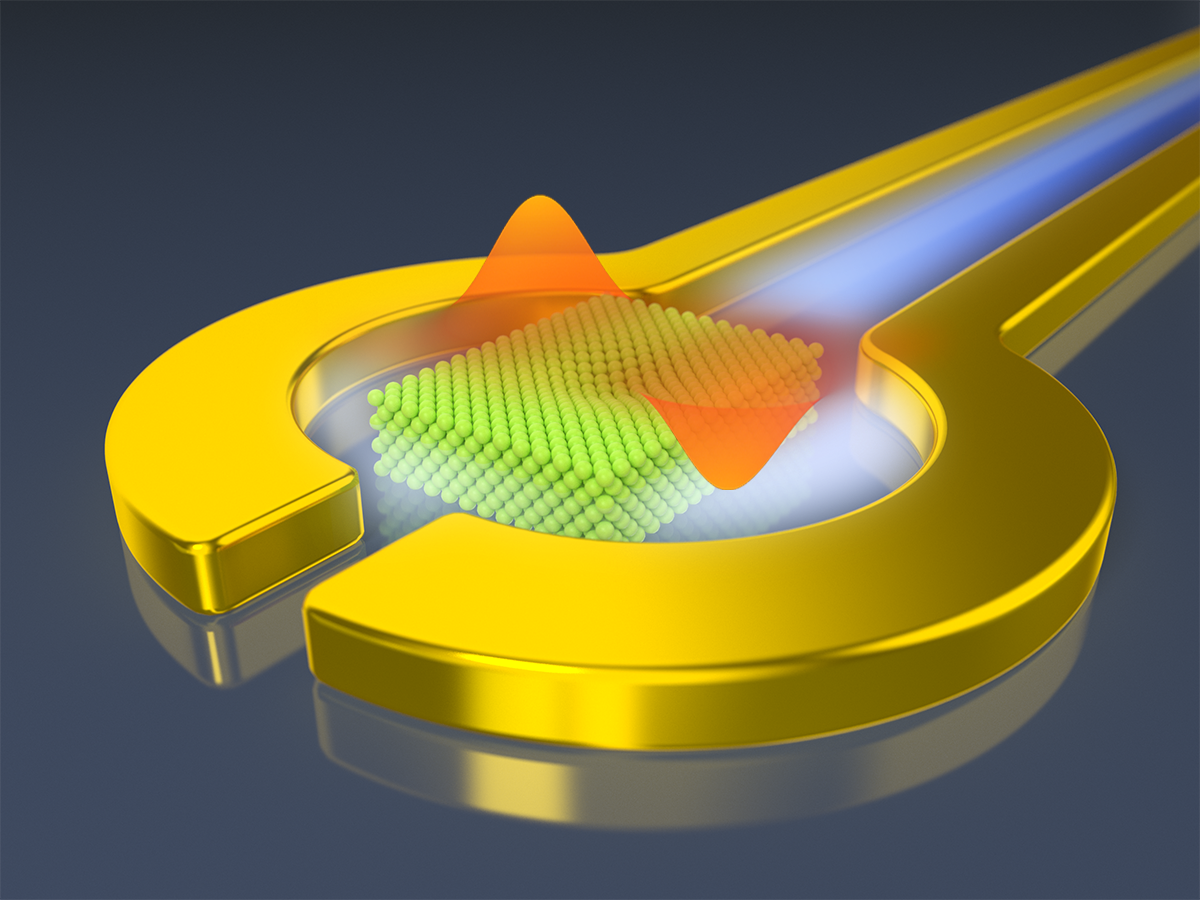Quantum computers can theoretically find the answers to problems no classical computer could ever solve, but they rely on infamously unstable components known as qubits. New findings now suggests that electrons trapped on frozen solid neon could prove a simple yet powerful kind of qubit for use in future quantum computers.
Qubits, or quantum bits, rely on the bizarre nature of quantum physics, which suggests that electrons, atoms and other building blocks of the universe can exist in a state known as superposition where they are essentially spin in two opposite directions at once or exist in two or more places at the same time. By placing many qubits into superposition, a quantum computer can in theory perform a mind-boggling number of computations simultaneously.
Amazon, Google, IBM, and many others are racing to create a practical quantum computer from a variety of qubit platforms, such as superconducting loops, electromagnetically trapped ions and spins within silicon. However, all qubits are extraordinarily fragile to outside interference.
“This is a completely new qubit platform. It adds itself to the existing qubit family and has big potential to be improved and to compete with currently well-known qubits.”
—Dafei Jin, Argonne National Laboratory
In the new study, to create a qubit protected from environmental disruptions, the scientists experimented with neon, a noble gas like helium that virtually never reacts with other elements, potentially making it an ideal host for a qubit. Neon freezes into a solid when cooled to below roughly minus 248.6 degrees C and brought to pressures of more than 0.42 atmospheres.
"The noble-gas solids are the most inert and purest solids in nature and can solve a lot of issues that other systems have," says study principal investigator Dafei Jin, a quantum physicist at Argonne National Laboratory in Lemont, Illinois.
The researchers chose one of the simplest possible qubits for their design—single electrons. They froze neon at a temperature one-hundredth of a degree above absolute zero on a microchip and then used a tiny light bulb filament to spray electrons at it.
"When you bring the electron near the surface of the neon, the electrons in the neon atoms get slightly rearranged and repelled by the electron, because like charges repel, but because the neon is neutral, this slight repulsion of electrons leaves a slightly positive charge that attracts the electron to the surface," says study co-senior author Kater Murch, a quantum physicist at Washington University in St. Louis.
However, this electron cannot penetrate the surface of the neon, since all of the neon's electrons' energy levels are filled, "so it is repelled from actually contacting the surface." Instead, this electron stays on top of the neon.
Neon ice shows promise as a new platform for quantum bits (a.k.a. qubits).www.youtube.com
Electrodes in the microchip can keep electrons that get trapped on the solid neon in place for more than two months. A superconducting microwave resonator on the chip, much like a microscopic version of a microwave oven, then emits microwaves to help control and read the qubit.
The scientists argue that useful qubits require three key qualities:
- They can show long coherence—that is, stay in superposition for long stretches of time—ideally more than a second.
- They can quickly change from one state to another to help perform operations rapidly, ideally roughly a billionth of a second.
- They can scale up to link with many other qubits via a quantum mechanical phenomenon known as entanglement so they can work in parallel together.
The group's experiments reveal that within optimization, the new qubit can already stay in superposition for 220 nanoseconds and change state in only a few nanoseconds, which outperform qubits based on electric charge that scientists have worked on for 20 years.
"This is a completely new qubit platform," Jin says. "It adds itself to the existing qubit family and has big potential to be improved and to compete with currently well-known qubits."
The researchers suggest that by developing qubits based on an electron's spin instead of its charge, they could develop qubits with coherence times exceeding one second. They add the relative simplicity of the device may lend itself to easy manufacture at low cost.
The new qubit resembles previous work creating qubits from electrons on liquid helium. However, the researchers note frozen neon is far more rigid than liquid helium, which suppresses surface vibrations that can disrupt the qubits.
It remains uncertain how scalable this new system is—whether it can incorporate hundreds, thousands or millions of qubits. "I cannot say I have a clear answer," Jin says. "It is still a problem shared by all the qubit platforms. We may have some ways to do better than superconducting qubits, and close to as good as trapped ions. But it is not easy to achieve hundreds of qubits in the near term."
In the future, the researchers aim not only to develop qubits based on electron spin instead of charge, but to also entangle two qubits together, "as that is a key step towards quantum computing," as well as "achieving tens of qubits on the same chip," Jin says. "No immediate obstacles if we just follow what other qubit platforms have developed so far. We think we can quickly catch up."
The scientists detailed their findings online May 4 in the journal Nature.
- Building Better Qubits - IEEE Spectrum ›
- In the Race to Hundreds of Qubits, Photons May Have "Quantum ... ›
- IBM’s Target: a 4,000-Qubit Processor by 2025 - IEEE Spectrum ›
- The First Mechanical Qubit - IEEE Spectrum ›
Charles Q. Choi is a science reporter who contributes regularly to IEEE Spectrum. He has written for Scientific American, The New York Times, Wired, and Science, among others.


